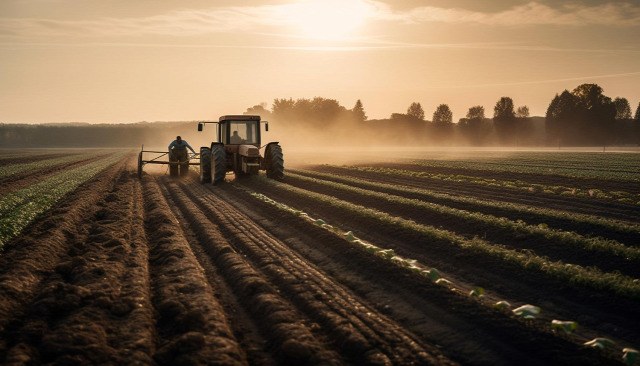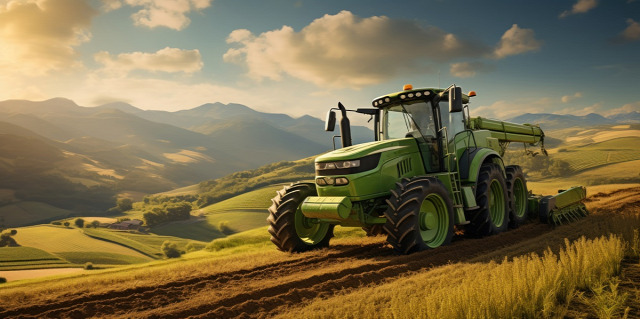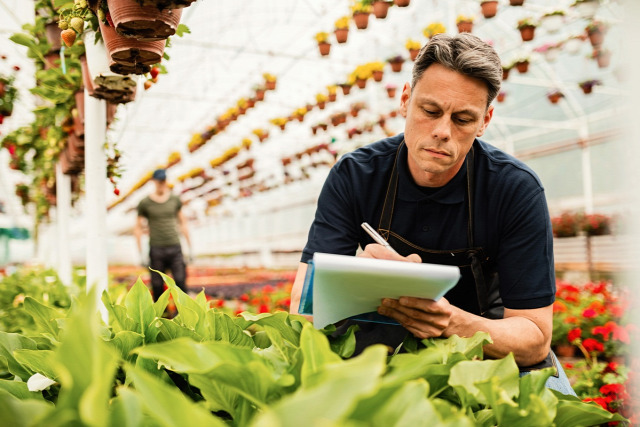
Augmented Reality (AR) Technology has rapidly evolved and is now making its mark in various industries, including agriculture. AR has the potential to revolutionize farming practices by providing farmers with real-time information, enhancing decision-making capabilities, and improving overall efficiency.
Market Overview
The Augmented Reality in Agriculture Market is experiencing significant growth worldwide. The integration of AR technology in agriculture offers farmers innovative solutions to address various challenges, such as labor shortages, resource management, and crop monitoring. By overlaying digital information onto the physical environment, AR enables farmers to visualize and interact with data in real-time, leading to improved productivity and sustainability.
According to BIS Research, the global augmented reality in agriculture market was valued at $0.84 million in 2021 and is projected to reach $4.89 million by 2027, growing at a CAGR of 34.49% during the forecast period 2022-2027.
The market is primarily in its emerging stage, and it is expected to be driven by the increasing demand for food, increasing population, trend of digitalization in the industry (Industry 4.0) and agriculture (Agriculture 4.0), need for simulated training, and precise field monitoring.
Key Market Applications
AR technology finds numerous applications in agriculture, transforming the way farmers work and manage their operations. Some key applications include:
- Crop Monitoring and Management: AR enables farmers to visualize crop data, such as growth patterns, nutrient levels, and pest infestations, directly in the field. This real-time information helps farmers make informed decisions about irrigation, fertilization, and pest control, leading to optimized crop yields and reduced resource waste.
- Training and Education: AR provides a unique platform for training and educating farmers. By overlaying digital instructions and simulations onto real-world scenarios, AR helps farmers learn new techniques, machinery operation, and safety protocols. This immersive and interactive training improves knowledge retention and efficiency.
- Equipment Maintenance and Repair: AR can assist farmers in equipment maintenance and repair tasks. By overlaying digital annotations and step-by-step instructions on machinery, AR guides farmers through complex repair processes, reducing downtime and improving operational efficiency.
- Farm Design and Planning: AR technology allows farmers to visualize and plan the layout of their farms digitally. By overlaying virtual elements onto the physical environment, farmers can optimize resource allocation, plan irrigation systems, and assess the impact of different farming practices before implementation.
Access More: Get FREE Detailed Insights on Augmented Reality in Agriculture Market Research!
Key Market Benefits
The adoption of AR Technology in agriculture offers several significant benefits:
- Enhanced Decision-Making: AR provides farmers with real-time, data-driven insights, enabling them to make informed decisions promptly. By visualizing critical information, such as crop health and weather conditions, farmers can take immediate action to mitigate risks and optimize farm operations.
- Improved Efficiency and Productivity: AR streamlines farming processes by reducing guesswork and manual labor. Farmers can access relevant information, instructions, and data directly in the field, leading to improved efficiency, reduced errors, and increased productivity.
- Sustainable Farming Practices: AR assists farmers in implementing sustainable farming practices by optimizing resource utilization, reducing chemical inputs, and minimizing environmental impact. Precise application of fertilizers, pesticides, and water based on real-time data contributes to sustainable agriculture.
Future Market Prospects and Opportunities
The future of Augmented Reality in Agriculture is promising. As technology continues to advance, AR solutions will become more sophisticated, user-friendly, and cost-effective. Additionally, the integration of AR with other emerging technologies, such as Internet of Things (IoT) and Artificial Intelligence (AI), will further enhance the capabilities of AR in agriculture.
Furthermore, AR has the potential to bridge the knowledge gap between experienced and novice farmers, allowing for knowledge transfer and improved farming practices. The development of AR applications specific to different crops, regions, and farming systems will unlock new opportunities for farmers to maximize their yields and optimize resource management.
Conclusion
Augmented Reality is transforming the agriculture industry, empowering farmers with real-time information, improved decision-making capabilities, and enhanced efficiency. The Augmented Reality in Agriculture Industry is poised for continued growth, driven by the need for sustainable farming practices and increased productivity. As AR technology evolves and becomes more accessible, its integration into farming practices will revolutionize the way we cultivate, monitor, and manage crops, contributing to a more sustainable and productive agricultural sector.





